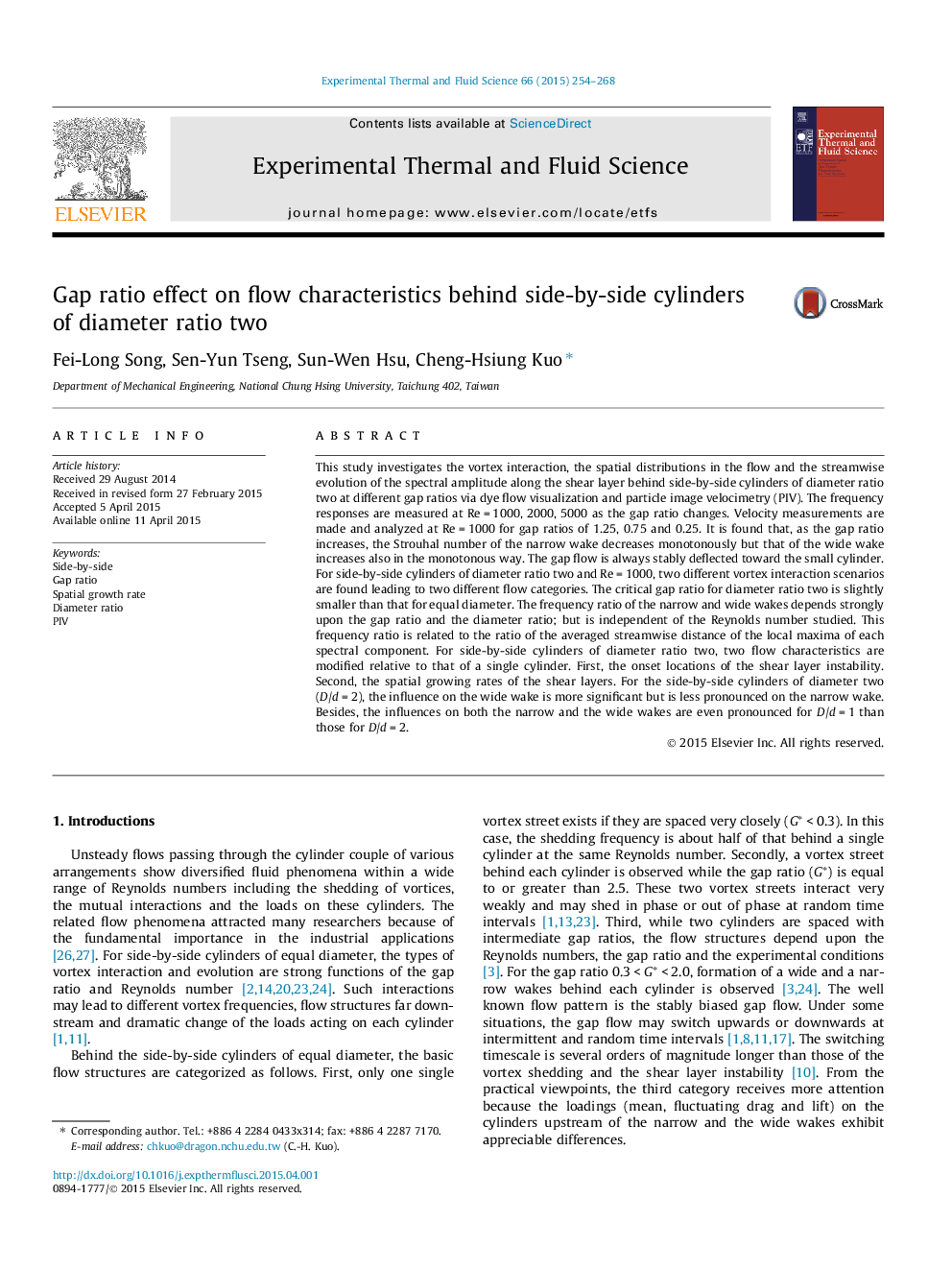| Article ID | Journal | Published Year | Pages | File Type |
|---|---|---|---|---|
| 651244 | Experimental Thermal and Fluid Science | 2015 | 15 Pages |
•For side-by-side cylinders of D/d = 2, the onset locations and the spatial growing rates of shear layers instability are changed.•The frequency ratio of the narrow and wide wakes depends upon the gap ratio and the diameter ratio; but is independent of the Reynolds number.•The influence on the wide wake is more significant but is less pronounced on the narrow wake. The influences on both wakes are even pronounced for D/d = 1 than those for D/d = 2.
This study investigates the vortex interaction, the spatial distributions in the flow and the streamwise evolution of the spectral amplitude along the shear layer behind side-by-side cylinders of diameter ratio two at different gap ratios via dye flow visualization and particle image velocimetry (PIV). The frequency responses are measured at Re = 1000, 2000, 5000 as the gap ratio changes. Velocity measurements are made and analyzed at Re = 1000 for gap ratios of 1.25, 0.75 and 0.25. It is found that, as the gap ratio increases, the Strouhal number of the narrow wake decreases monotonously but that of the wide wake increases also in the monotonous way. The gap flow is always stably deflected toward the small cylinder. For side-by-side cylinders of diameter ratio two and Re = 1000, two different vortex interaction scenarios are found leading to two different flow categories. The critical gap ratio for diameter ratio two is slightly smaller than that for equal diameter. The frequency ratio of the narrow and wide wakes depends strongly upon the gap ratio and the diameter ratio; but is independent of the Reynolds number studied. This frequency ratio is related to the ratio of the averaged streamwise distance of the local maxima of each spectral component. For side-by-side cylinders of diameter ratio two, two flow characteristics are modified relative to that of a single cylinder. First, the onset locations of the shear layer instability. Second, the spatial growing rates of the shear layers. For the side-by-side cylinders of diameter two (D/d = 2), the influence on the wide wake is more significant but is less pronounced on the narrow wake. Besides, the influences on both the narrow and the wide wakes are even pronounced for D/d = 1 than those for D/d = 2.
